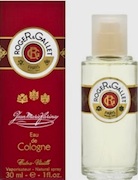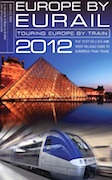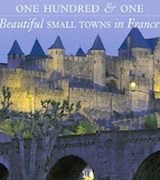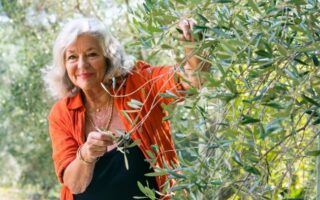Olé to the Course Landaise

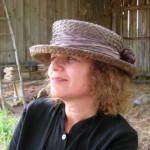
- SUBSCRIBE
- ALREADY SUBSCRIBED?
BECOME A BONJOUR PARIS MEMBER
Gain full access to our collection of over 5,000 articles and bring the City of Light into your life. Just 60 USD per year.
Find out why you should become a member here.
Sign in
Fill in your credentials below.
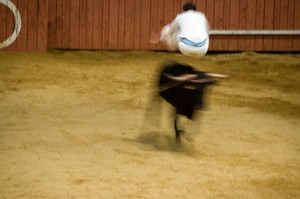 The Course Landaise is an ancient style of Iberian bullfighting that does not involve the death of the animal. It’s an acrobatic sport rather than a blood sport. “Landaise” cows instead of bulls are used. These cows are bred specifically in the Landes department and are not raised for their milk or their meat, but for their agility and entertainment value. These cows originally roamed the wild plains of northern Spain and southern France and are a deliberately derivative breed of the same bulls used in the Spanish Corridas.
The Course Landaise is an ancient style of Iberian bullfighting that does not involve the death of the animal. It’s an acrobatic sport rather than a blood sport. “Landaise” cows instead of bulls are used. These cows are bred specifically in the Landes department and are not raised for their milk or their meat, but for their agility and entertainment value. These cows originally roamed the wild plains of northern Spain and southern France and are a deliberately derivative breed of the same bulls used in the Spanish Corridas.
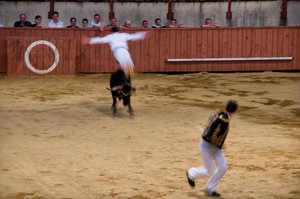 The Course Landaise is the official spectator sport in the Gers department, particularly in the fête month of August when the local villagers come together to celebrate the uniqueness of their community. There are over 500 matches of man pitted against beast every year. Each village has an arena that’s used for a variety of events. The Course Landaise I attended was in the the village of Estang. Usually, a rather somber village reminiscent of photographs of deserted villages during WWII, it comes alive for five days of raucous festivities. I was told by a native Gersois that many decades ago each family of the village donated one oak tree towards the building of the arena and they continue to be, understandably, very proud of it, repainting it bright red when weathered.
The Course Landaise is the official spectator sport in the Gers department, particularly in the fête month of August when the local villagers come together to celebrate the uniqueness of their community. There are over 500 matches of man pitted against beast every year. Each village has an arena that’s used for a variety of events. The Course Landaise I attended was in the the village of Estang. Usually, a rather somber village reminiscent of photographs of deserted villages during WWII, it comes alive for five days of raucous festivities. I was told by a native Gersois that many decades ago each family of the village donated one oak tree towards the building of the arena and they continue to be, understandably, very proud of it, repainting it bright red when weathered.
The Course Landaise is, admittedly, a rather simple sport consisting of provoking the cow to charge the Torero. All arenas require the cow to be put on a long charging line tied to its horns with two strong men at the other ends to protect the Torero (bullfighter) from potential injury. Even though these Toreros never fight to the death, they are respected professionals whose passion and love of the sport attracts cult followers across the region.
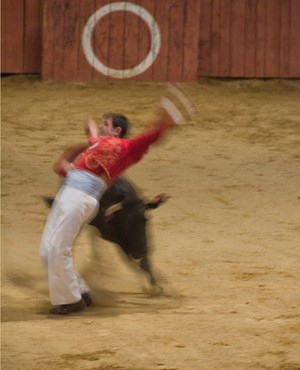 The “Écarteur” (swerver) must be brave, nimble-footed and self assured. He can provoke the cow in two ways – when it’s only a few meters away, he can make a vertical jump hoping to land as close as possible to the cows’ horns and muzzle, quickly swerving to make the cow pass behind his arched back or he can indicate to the cow that he is going to turn in a particular direction, then quickly veer in the opposite direction thus hoping to fool the galloping animal. The “Sauteur”, jumper, charges the cow by running and either jumping or somersaulting over the cow to end up behind it. Some Écarteurs and Sauteurs wind up with gashes and bruises, but rarely do they die from their injuries. And, the cow returns to its grazing lands without any harm done to it, ready to greet the dawn of another day.
The “Écarteur” (swerver) must be brave, nimble-footed and self assured. He can provoke the cow in two ways – when it’s only a few meters away, he can make a vertical jump hoping to land as close as possible to the cows’ horns and muzzle, quickly swerving to make the cow pass behind his arched back or he can indicate to the cow that he is going to turn in a particular direction, then quickly veer in the opposite direction thus hoping to fool the galloping animal. The “Sauteur”, jumper, charges the cow by running and either jumping or somersaulting over the cow to end up behind it. Some Écarteurs and Sauteurs wind up with gashes and bruises, but rarely do they die from their injuries. And, the cow returns to its grazing lands without any harm done to it, ready to greet the dawn of another day.
The Course Landaise is an expression of true agrarian culture at its best and well worth, at least, one visit when traveling in the pastoral landscape of the department of the Gers.
Subscribe for FREE weekly newsletters.
BonjourParis has been a leading France travel and French lifestyle site since 1995.
Readers’ Favorites: Top 100 Books, imports & more at our Amazon store
We update our daily selections, including the newest available with an Amazon.com pre-release discount of 30% or more. Find them by starting here at the back of the Travel section, then work backwards page by page in sections that interest you.
Current favorites, including bestselling Roger&Gallet unisex fragrance Extra Vieielle Jean-Marie Farina….please click on an image for details.
Click on this banner to link to Amazon.com & your purchases support our site….merci!
More in Course Landaise, Landaise cows

